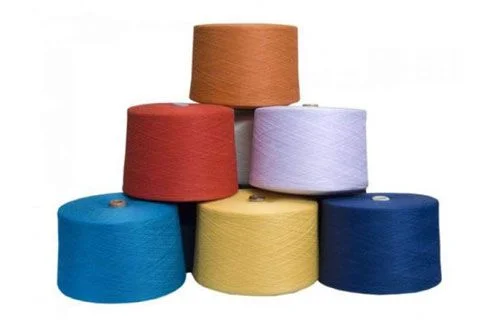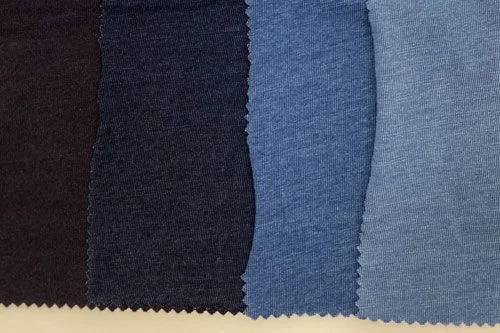The color consistency and fastness of indigo yarn are of great importance in knitted fabric production. It is preferred to use rope dye in indigo knitted fabric so that the colors get the real denim effect after washing. Since indigo yarns are dyed separately in rope dyeing, the bobbins must be knitted in a way that ensures color homogeneity and that no abrasion occurs in the fabric during knitting. After the knitting process is completed, shrinkage, dimensional change and color fastness values are checked during the fabric quality control process. We knit cotton indigo yarns in counts from Ne 6/1 to Ne 30/1 into fabric by knitting them on circular knitting machines. Indigo knitted fabrics are used in the production of jeans, t-shirts, dresses and many other clothing products. Knitted fabrics create a texture where the threads are intertwined, which makes the fabric elastic and comfortable. Indigo knitted fabrics are very popular due to their durability and comfort and are often preferred for daily wear. 1. **Material Preparation:** The first step is to prepare the materials required for the painting process. These materials include natural indigo dye, alkaline solution (such as sodium hydroxide), ropes and dyeing tank. 2. **Indigo Dye Preparation:** Indigo dye is turned into a special solution. This is done by increasing the solubility of indigo grains in water. 3. **Preparation of the Ropes:** The ropes are cleaned and made ready for the dyeing process. Generally, the ropes are first soaked in an alkaline solution and then rinsed with water. 4. **Dipping into the Dyeing Tank:** The prepared ropes are dipped into the tank containing indigo dye. This step allows the ropes to be dyed. The ropes are kept in the dyeing tank for a certain period of time and the dye is ensured to penetrate thoroughly into the rope. 5. **Contact with Air:** When the ropes are removed from the dyeing tank, they are brought into contact with oxygen. In this process, indigo dye oxidizes to form its color and blue color appears on the rope. During the process, the color starts as light blue and deepens over time as it comes into contact with oxygen. 6. **Washing and Drying:** Finally, the dyed ropes are washed and dried. This process removes excess paint and makes the ropes ready for use. Indigo rope dyeing can be used for decorative purposes or in special projects. It is also preferred in the production of some handicrafts and textile products.KNITTED INDIGO FABRIC PRODUCTION
INDIGO KNITTED FABRIC
INDIGO ROPE DYEING
Indigo rope dyeing is the process of dyeing ropes, using natural indigo dye. This process is done to change the color of the ropes or to obtain a more aesthetic appearance. Basic steps of indigo rope dyeing process:



